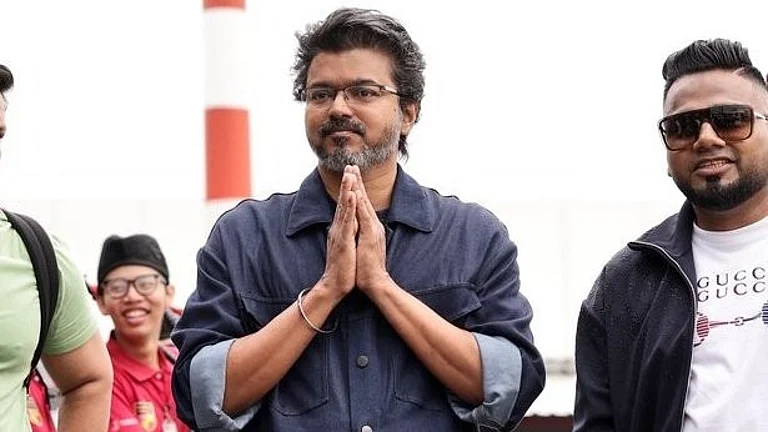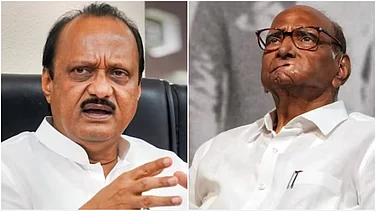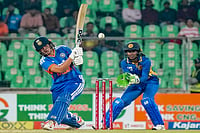AS investigations into the Bofors scam continue, a question mark hangs on the very fate of the guns which were supplied by the Swedish gun manufacturers. Whatever the final outcome of the investigations, the 8.4 billion Swedish Kroner (Rs 1,700 crore) that the Indian Government has invested in acquiring 410 of the 155-mm guns could well turn out to be money wasted. With spares and ammunition in short supply and no technical upgradation of the weapon, defence sources say the usefulness of the gun could be compromised if this trend continues. Surprisingly enough, charges for technical upgradation and the transfer of technology (TOT) to facilitate the production of spares and ammunition within the country have already been paid. But the ban on Bofors by the V.P. Singh government has put the TOT on hold. About Rs 20 crore was paid by the Indian Government for technical assistance from the Swedish company to start production in ordnance factories in the country.
Hit by ammunition shortage, the Ministry of Defence is said to be actively considering importing normal high explosive shells for the gun from Denel of South Africa. In addition to this, the ministry is also talking of importing 'smoke rounds' and 'illuminating rounds' (shells which light up when fired or create a smokescreen) from Denel. The South African company has agreed to provide the shells at $326 (Rs 11,500) per piece. The annual requirement of the Army is 15,000 to 18,000 rounds.
The normal shell, different from the extended range ammunition, used by the Bofors gun, is currently being manufactured within the country based on the technical specifications provided by the Swedish company when the guns were delivered. The hardware for the shell is made by the ordnance factory at Ambajhari, near Nagpur, while the filling is produced at Chandrapur. However, because the Indian production has not proved to be cost-effective, Defence Ministry has decided to shop for ammunition.
At present, with the extended range ammunition in short supply, the gun cannot fulfil its promised 30-km range. The normal high explosive shells which the ministry hopes to buy from South Africa comes in two varieties—one has a firing range of 24 km and the other 17 km.
Using ammunition from a new manufacturer would involve modification of the fire control unit. This computerised and sophisticated unit, which is programmed on the basis of ballistics and range tables of Bofors ammunition, will have to be reprogrammed as per the specifications of the new ammunition. Then expensive tests will have to be carried out. Bofors wrote suo moto to the Defence Secretary on October 4, 1996, that a new range of ammunition could cause damage to the weapons and that it would not be responsible for any damage caused.
As far as the army officers on the field are concerned, ammunition of any description is fine, provided it works. Ditto for spares. However, efforts by the ordnance factories to marry parts of other guns with the Bofors gun have not been all too successful and there is one view that even if the Ministry of Defence wants to go shopping for spares, it may be more feasible to buy from the suppliers from whom Bofors had picked up the equipment. Either way, something has to be done fast. Points out Maj Gen. (retd) Ashok Mehta: "Sooner or later we will have to come to terms with the fact that we have been saddled with the Bofors gun. And if we wish to use the weapon, we have to have ammunition and spares." Currently, no major spare part is being engineered in the country except for the barrel, which has to be replaced frequently; it is manufactured at the Cossipore ordnance factory in Calcutta. Besides, modern weapon systems require regular maintenance and product support. The absence of this vital logistic has reportedly resulted in the army trying other options, including cannibalisation and makeshift replacements. Points out a senior artillery officer: "We are not saying that we must place fresh orders or that we should import more 155 mms from Bofors. At least, let us demand from them what we have already paid for. Otherwise it would be a national waste." Opinions on whether the Bofors gun was the right choice are sharply divided. While Mehta and others are of the view that the weapon may not be suited to Indian conditions, there is a pro-Bofors school which says the gun is a sophisticated field artillery system. However, even those who question the capacity and capability of the weapon point out that the upgradation of the gun as well as the TOT to produce spares and ammunition for which India has already made payments have to be availed of. They fear that if that is not done, the Army would be left with low performance equipment for which a high price has already been paid.
As for Bofors, the company, sources say it is very worried about the reputation of its gun suffering on account of possible accidents when the new ammunition is tested. The Swedish company, which was under a private management when the gun deal took place and now has the Swedish government as the shareholder with 54 per cent voting rights, also wishes to revive the rest of the Bofors deal. However, the Defence Ministry has been keeping off the Swedish company and is actively considering a 152-mm Russian gun.
Meanwhile, the CBI team which went to Malaysia to investigate Ottavio Quatt-rocchi has come back empty-handed. The extradition of the Italian businessman, named as one of the recipients of the kickbacks, has not materialised and the probe, according to sources, has reached a virtual dead-end. The CBI now says that it could take months for the next lot of the Bofors papers to arrive before investigations can move ahead. Meanwhile, the high-profile 155-mm will have to continue with its low-profile performance.






















